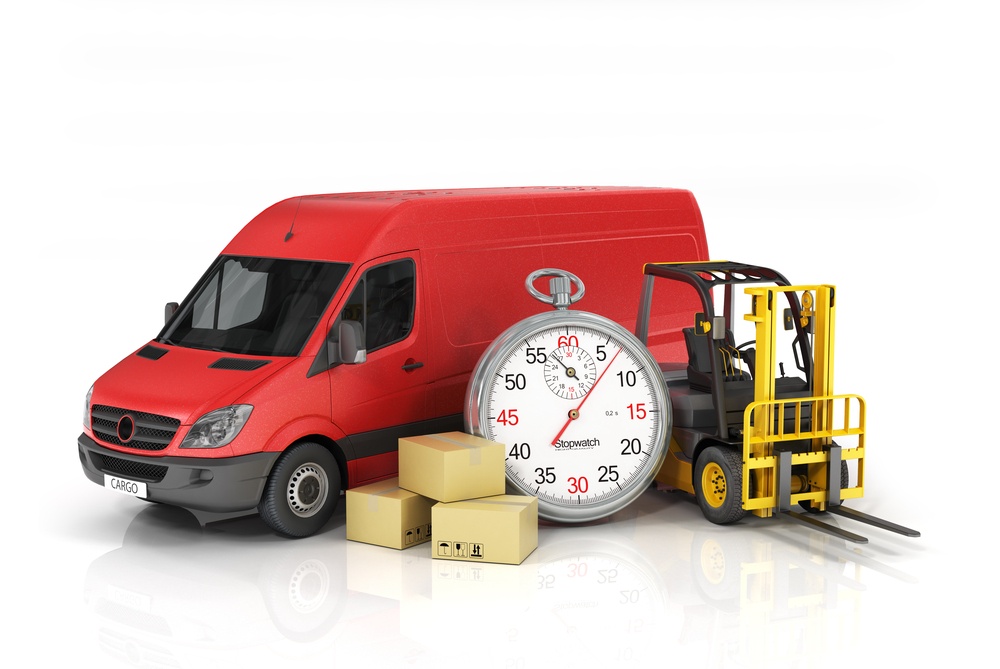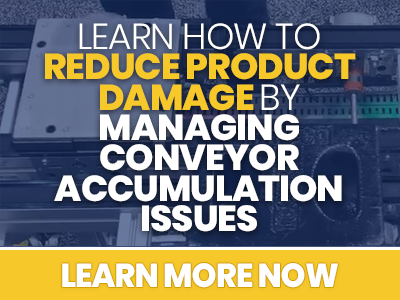Choosing a conveyor system manufacturer is no simple task, particularly when you’re under a deadline. This guide with questions to ask, along with common answers from both Glide-Line and our competitors, can help you in your decision-making process as you select a partner. Jump to these sections:
Lead Time Questions
1. What are the manufacturer’s standard conveyor options?
Lead time will be greatly impacted by the number of standard versus custom conveyor parts you need in an applications system. If you need both short lead time and variations from the standard norms, look for a manufacturer with the greatest variety and flexibility in their standard conveyor system options.
2. What are the manufacturer’s lead times for standard conveyors?
 Most conveyor systems manufacturers’ lead times from order to delivery are 6 – 12 weeks. Sometimes this can be expedited in return for a hefty fee.
Most conveyor systems manufacturers’ lead times from order to delivery are 6 – 12 weeks. Sometimes this can be expedited in return for a hefty fee.
Partnering with a versatile conveyor systems manufacturer like Glide-Line will do the most to shorten your lead time. Glide-Line’s manufacturing process is built for quick lead times; we can ship conveyors in 2 to 3 weeks, and devices such as lifts, lift and transfers, lift and locate stations, and more in 4 to 6 weeks. This conveyor lead time is cut in half from other manufacturers and saves your client significant time and money.
3. What is the typical lead time for customized or altered conveyor elements?
If you can’t avoid customizations in your conveyor application, the next step is to seek a manufacturing partner able to deliver customized elements as quickly as possible. Better yet, seek a partner with configurable or alterable options; they’re faster than customizations.
For example, Glide-Line’s 360 series conveyor is built to be as flexible and configurable as possible - the most flexible conveyor on the market today. So, instead of customizing a conveyor from scratch to meet your client’s goal, you’re configuring a standard, which significantly cuts down on lead time.
Even if your unique application requires true customization, an experienced flexible conveyor manufacturer will have built their manufacturing process to be incredibly efficient, making for quick conveyor lead times even for truly customized conveyor solutions.
4. Is there something different in the company’s manufacturing process enabling them to produce engineered designs quicker than most?
You’ll be able to gauge a manufacturer’s ability to innovate with new solutions, new processes, and new customer-focused initiatives based partially on this response. A traditional company will simply speed up their current process to accommodate a shorter lead time request, often at the expense of your client (and possibly at the expense of attention to detail). However, an innovative company will employ a more efficient conveyor manufacturing process to address this frequent concern of applications engineers.
Glide-Line, for example, has designed their manufacturing process for conveyor systems around customers’ desires for a shorter lead time, effectively cutting lead times in half for all standard and configured orders.
5. Can the company expedite materials if needed?
For some manufacturers, this answer will be ‘yes’. But, your follow-up question should be, “At what cost?” Paying twice as much for expedited delivery may not be worth it to your customer. Instead, look for a conveyor manufacturer with limited cost increases for shortened lead times to minimize the impact to your customer’s bottom line and increase overall ROI of the conveyor system.
Service Questions
6. How easy is it to maintain the conveyor belt?
Your client’s maintenance team will appreciate attention paid to the work they do, and how easy it will be to accomplish any maintenance on the conveyor. Easy maintenance impacts your client’s throughput and RO and improves positive employee relationships because their priorities were considered in the process.
Glide-Line’s belts can be removed from the top of the conveyor, meaning they’re generally easier to access than most other conveyor belts. Plus, we ship our belts endless, so they don’t have to be spliced on site by the customer. Since splicing requires special training, a special tool, and a lot more time, changing a Glide Line belt is significantly quicker and easier.
7. How does service take place?
Service on your client’s conveyors can be provided by both internal and external sources, depending on their current set-up. However, it’s important for your conveyor manufacturer to also provide service and support when the need arises. More important still is the speed at which that service is provided, and in what format. The goal is to minimize downtime.
8. Is the manufacturer responsive to inquiries, requests, and service requirements?
A responsive manufacturer shows collaborative quality in their observable actions. Plus, it’s obvious a highly responsive manufacturer will be more responsive throughout the terms of the business transaction, making for an overall smoother experience. When your lead time is already short, you can’t afford to wait around for responses from a manufacturer who may not have the answers you’re looking for.
Capabilities Questions
9. What are the manufacturer’s standard conveyor options?
Lead time will be greatly impacted by the number of standard versus custom conveyor parts you need in an applications system. If you require both short lead time and variations from the standard norms, look for a manufacturer with the greatest variety and flexibility in their standard conveyor system options.
10. Which type of conveyor and controls will be the most productive for the materials I need conveyed?
This will depend on your specific situation. Your goal should be to find a collaborative conveyor manufacturer capable of delivering thought-provoking and unique solutions when necessary. Our recent post “Unique Assembly Conveyor Layouts and The Best Applications” gives examples of the most flexible and productive conveyor layouts we’ve designed for some of our clients’ most challenging applications.
Cost Questions
11. How should I calculate the ROI of my conveyor?
The return on investment of your conveyor or conveyor system can be measured via its throughput, energy costs/savings, and time cost/savings for manufacturing, operation, and maintenance.
12. How quickly can we get a quote?
Ideally, you can get a quote instantly using an in-context configurator, IMPACT! from Glide-Line. With a traditional configurator, calculating the cost of your multi-strand conveyor system frequently necessitates a discussion with the manufacturer’s sales representative. It could take hours or even days to receive pricing, and every time there’s a change to the system, there’s a change to the price. With an in-context configurator as your conveyor design software, all the system calculations are instant, available to you the moment you make the change. You’re able to find and quote pricing on your own, without waiting for a salesperson. IMPACT! is Excel-based, so it’s easy to learn, and it can even drive models in SOLIDWORKS automatically.
Armed with these answers, now you can more easily compare competitive conveyor manufacturers and choose a partner that best fits your client’s needs. Learn more in our ebook, How to Cut Conveyor System Lead Time in Half.











Leave a Comment